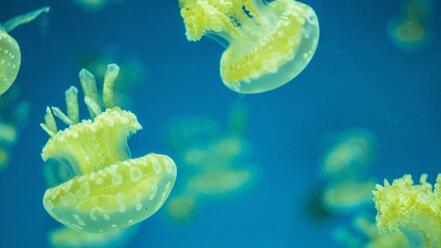Antibody Specificity and affinity in Immunoprecipitation
What is antibody specificity and affinity? And why is it important for immunoprecipitation?
Introduction of Affinity vs. Specificity
Both, the affinity and specificity of an affinity bead determine how effective and clean the results of an immunoprecipitation (IP) assay become.
The term affinity describes the strength of the binding between the antibody/Nanobody, which are conjugated to the affinity beads, and the antigen. A low-affinity antibody binds weakly and a high-affinity Nanobody binds firmly to the antigen. Affinity is stated as reciprocal equilibrium dissociation constant KD: the lower the KD value, the higher the affinity, and the stronger the protein of interest (POI) is bound. For an effective IP, a high affinity is needed.
The term specificity describes both the match between the Nanobody’s paratope and the antigen and the Nanobody’s discrimination proficiency of other antigens. For an IP it is important to ensure that only the POI is bound while other proteins of the cell lysate are washed away. The better the specificity of the affinity beads the lower is the background of an IP.

Please note that a high specificity is often accompanied by a high affinity. Hence “high affinity” and “high specificity” are frequently used in an interchangeable manner, which can be confusing.
High specificity ensures low background and facilitates Co-IP
Fluorescent proteins (FPs) like GFP are frequently used as protein tags for immunoprecipitation. There are multiple FP derivatives that sometimes just differ in single amino acids. For the IP of FP-tagged proteins two aspects regarding specificity of the affinity beads are important:
- The specificity should be very high to the POI to ensure that only the POI is detected and to keep the background low.
- Variations of the FP with e.g. single amino acid replacements should still be bound to avoid tedious re-cloning.
Furthermore, high specificity is important because in Co-IPs often additional FP tags are used next to the bait and prey proteins and only the bait protein shall bind to the affinity beads to avoid false positive results.
ChromoTek’s GFP-Trap is highly specific with respect to common GFP variants such as Emerald, mPhluorin, Superfolder GFP, CFP, and YFP. However, other fluorescent proteins, e.g. mNeonGreen, TurboGFP, RFP or mCherry, are not bound and can be used for multiplexed assays. Therefore, GFP-Trap is the perfect tool for IPs and Co-IPs of GFP-tagged proteins.
High affinity ensures complete precipitation, even of low abundant proteins
High affinity is important for an IP reaction to ensure complete capture of the POI. During an IP the POI binds to the affinity beads’ Nanobodies until equilibrium is reached. The higher the affinity, i.e. the lower the KD value, the more POI is bound and just a small POI fraction remains unbound in the flow through.
In addition, high affinity is also needed when pulling down a low abundant POI. If a protein has a low expression level, capture by the affinity beads and detection in Western blotting is challenging. When an affinity resin has a low affinity, the POI is not bound and remains in the flow through although it is present in the cell lysate.
ChromoTek’s GFP-Trap has an ultrahigh affinity of 1 picomolar. It ensures almost complete binding of a GFP-tagged POI during an IP. Even low abundant proteins are precipitated from the cell lysate and enriched by this affinity resin. Example calculation: based on a KD of 1 pM and a standard IP volume of 500 µL, even <1 ng of GFP can be captured by GFP-Trap from cell lysate.
Concentration and dilution of the sample contribute to an effective IP
The affinity is a given property of the individual antibody or Nanobody. However, in order to improve the performance of a pull-down the concentration of the POI has an impact.
The higher the protein concentration the higher the IP yield. A high protein concentration can be regulated by the expression level and by the number of cells used. It is recommended to use ~106 - 107 cells or 500 μg of cell extract for one IP reaction. If the total cell lysate is too concentrated, more washing steps and harsher washing conditions may be required to keep the background low.
The smaller the volume you apply to the affinity beads, the more effective your IP becomes. Avoid dilution of the cell lysate during preparation. If not allowed by the protocol, use ultrahigh affinity beads like GFP-Trap. We recommend using a sample volume of at least 500 µL in a 1.5 mL tube to ensure proper mixing of the GFP-Trap beads with the cell lysate.
Watch the video about successful immunoprecipitation with GFP-Trap: